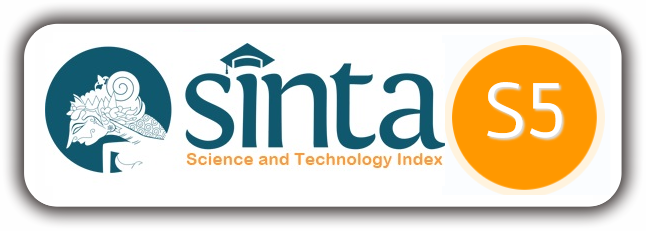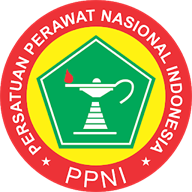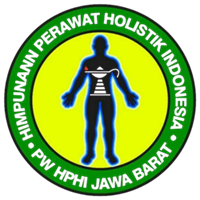Giving Boiled Celery Leaves to Reduce Blood Pressure in Elderly People with Hypertension
DOI:
https://doi.org/10.52221/jvnus.v3i2.400Keywords:
Blood Pressure, Elderly, Celery LeavesAbstract
The high incidence of hypertension in the elderly and uncontrolled triggers degenerative diseases such as congestive heart failure, kidney failure, and vascular disease such as stroke and peripheral arterial disease. The high incidence of hypertension is directly proportional to the high complications that occur, so adequate nonpharmacologic treatment is needed. Celery (Apium graveolens L.) is one of the types of herbal therapy used to treat hypertension. Traditional Chinese society has long used celery to lower blood pressure. The purpose of this study was to determine the effect of celery leaf decoction on elderly blood pressure in patients with hypertension in the Mambi Health Center, Mamasa District. His research method is a quasi-experimental method, using a time-series research design. This study took a sample of 20 people. The sampling techniques were consecutive sampling, and the measuring instruments used were observation sheets and spigmanometers. Analyzed by the Friedman test with a significance level of alpha = 0.05. The results of the study obtained statistical tests showing that there were significant differences by comparing systolic blood pressure before, 3 days of administration and 7 days of administration of celery leaves, obtaining a mean value which decreased from the first day, the third day and the days of 2.75, 2.23 and 1.03 with a value of 0.000 <0.05, as well as Diastolic blood pressure, respectively, 2.75, 1.98 and 1.30 with p value of 0.000 <0.05, which means there is an effect of giving celery leaf decoction to reduce systolic and diastolic blood pressure
Downloads
References
Ali-akbari, S., Asadi-samani, M., Ghadery, H., Committee, A., Research, M., University, K., … Student, P. (2014). Apium graveolens, 1 (1), 48–59.
Arisandi, R., Sukohar, A., Medicine, F., Lampung, U., Pharmacology, B., Medicine, F., & Lampung, U. (2016). Celery (Apium graveolens L) as Chemopreventive Agent for Cancer Celery (Apium graveolens L) as Chemopreventive Agent for Cancer, 5 (April), 95–100.
Department of health. (2007). Pharmaceutical care. Pharmaceutical Care for Hypertension , 1–50.
Dharma, K.K. (2017). Nursing Research Methodology (Guidelines for carrying out and applying research results) . Jakarta: TEAM.
HS, Intan Eka Oktavia. Junaid, and A. (2017). The Effect of Giving Boiled Celery Water (Apium Graveolens) on Reducing Systolic and Diastolic Blood Pressure in Hypertension Sufferers in the Puuwatu Health Center Working Area, Kendari City, 2016. Public Health Student Scientific Journal , 2 (6), 1–12.
Ilmiah, J., Batanghari, U., & Vol, J. (2017). The Influence of Health Education Using Leaflet Media on Mothers' Knowledge About Management of ISPA in Toddlers at Posyandu Tina Yuli Fatmawati 1, 17 (3), 227–234.
Julianti, ED, Nurjanah, N., & Seotrisno, USS (2007). Free from Hypertension with Juice Therapy . Jakarta.
Ministry of Health RI. (2014). Hypertension Data Center. Infodatin , (Hypertension), 1–7. https://doi.org/10.1177/109019817400200403
Komplementer, A., Di, B., Banyumas, K., & Soedirman, UJ (2010). Soedirman Nursing Journal (The Soedirman Journal of Nursing), Volume 5, No.2, July 2010, 5 (2), 95–104. https://doi.org/10.1111/hsc.12196
Kusuma Hardi, & Nurarif Huda Armin. (2015). Nursing Care Application Based on Medical Diagnosis and Nanda Nic-Noc . (Yudha, Ed.) (Ed, 2). Jogjakarta: Mediaction Publishers.
Lyrawati, D. and AA (2015). Tanjungpura University Faculty of Medicine Pharmacy Study Program 2015.
Machfoedz, I. (2017). Research Methodology . Yogyakarta: Fitramaya.
Muhith Abdul. (2016). Gerontic Nursing Education . (Andi, Ed.) (Ed. 1). Yogyakarta.
Purwaningsih, W. et al. (2010). Maternity Nursing Care, 35. https://doi.org/10.1016/j.scico.2014.05.006
Robert E. Kowalski. (2010). Hypertension therapy . (Astuti Rahmani, Ed.) (Ed.1). Bandung: Qanita.
Saputra, O., & Fitria, T. (2016). Efficacy of Celery Leaves (Apium graveolens) Against High Blood Pressure in Hypercholesterolemia Patients Efficacy of Celery Leaves (Apium graveolens) Against Hypertension in Hypercholesterolemia Patients, 5 (April), 1–6.
Saryono. (2011). Health Research Methodology . (A. Setiawan, Ed.). Yogyakarta: Scholar Partners.
Sharif La Ode. (2012). Gerontic Nursing Care . (N. ArTeam, Ed.) (1st Ed.). Yogyakarta.
Soenarta, AA, Erwinanto, Mumpuni, ASS, Barack, R., Lukito, AA, Hersunarti, N., … Pratikto, RS (2015). Guidelines for the management of hypertension in cardiovascular disease. Guidelines for the Management of Hypertension in Cardiovascular Disease , 1 , 1–2.
Sofia Rhosma Dewi. (2014). Gerontic Nursing Textbook . (H. Rahmadhani, Ed.) (Ed.1). Yogyakarta: Deepublish.
Sopiyudin, MD (2011). Statistics for Medicine and Health: Descriptive, Bivariate and Multivariate with applications using SPSS . (A. Suslia, Ed.) (Ed.5). Jakarta: Salemba Medika.
Studi, P., Ilmu, S., Nuryanti, NL, (2011). The Effect of Providing Boiled Celery Water on Reducing Blood Pressure in Elderly People Suffering from Hypertension at Pstw Budhi Dharma Bekasi in 2011, Indonesian Medical College of Nursing.
Widyaningrum, S. (2012). The Relationship Between Food Consumption and the Incident of Hypertension in the Elderly. The Relationship Between Food Consumption and the Incident of Hypertension in the Elderly , 53 (9), 1–146. https://doi.org/10.1017/CBO9781107415324.004
Downloads
Published
How to Cite
Issue
Section
License
Copyright (c) 2021 M Syikir, Tri Wulansari Dewi, Adiatman Adiatman, Irfan Irfan

This work is licensed under a Creative Commons Attribution 4.0 International License.















